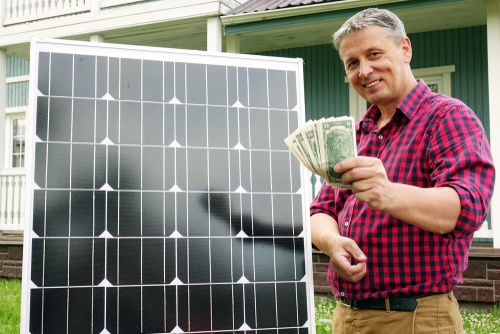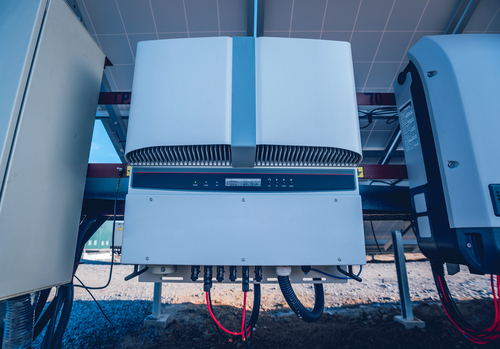How Many Solar Panels? Determining The Right Number for an Efficient System.
If you’ve decided to install new solar panels to your home, you may be wondering how many solar panels will make for an attractive and efficient system. It’s not a straight forward answer to know the number of panels you’ll need. Ultimately, you’ll want to consult with professional solar professionals in your area and get several system plans and estimates.
Fortunately, we can provide you with information about panels that will help you determine the number of panels that are best for you. Learn more about the science that goes into determining how many panels. Then, you’ll be able to make an educated decision on a solar system and have a great return on your investment.
Why Get Solar Panels?

Solar panels are a great investment in your home. If you are like most consumers of solar panels, the main reason you have decided to make the leap and change to solar energy is to save money on electric bills. And sure, on top of that, solar energy is better for the environment.
What are Solar Panels?
Solar panels are built from photovoltaic cells or solar cells. The majority of solar panels are made of either crystalline silicon or thin-film solar cells. It is in these cells that sunlight is converted to electricity or power. the cells on your solar panels absorb the energy from sunlight. Circuits within the cells take that energy and turn it into direct current electricity also known as DC.
These panels of cells are installed on your home’s roof or on your property and the DC is passed through a solar inverter. This is where DC is changed into alternating current or AC. AC electricity is used by most homes but it can also be stored or sent back to the grid.
All solar panels are rated by DC. Solar panel power output is shown in units of watts (W). Keep in mind when you are shopping for panels, that the power production figures are based on ideal sunlight conditions. Where you live, temperature and the panels’ placement all influence your system’s ability to collect and transfer energy. Today, most home solar panels have power output ratings ranging from 250 to 400 watts. Simply put, the more sunlight that hits the solar cells on the panel, the more energy is produced to power your home.

Determining Your Electricity Usage
To begin estimating how many panels you will need, first you will want to calculate how much electricity you and your family use to power your home.
Gather your electricity bills and take a look over the past 12 months. Most utilities provide you with your total power consumption for the last twelve months on your monthly bill. Remember to look at the entire year, as your electricity consumption probably varies month to month. Your consumption of power is measured in kilowatt hour or kWh.
- Total all 12 months of electricity usage by the kilowatt hour (kWh).
- Divide the total kWh by 12 to determine your average monthly amount of electricity used. For example, you may average out 1000 kWh each month.
- Divide your average monthly usage by 30 in order to get a rough idea of how much power you use each day. If you used 1000 kWh for the entire year, take 1000 ÷ 30 = 33.3 kWh per day. For reference, average Americans use about 30 kWh each day.
As life goes on, your energy demands will increase so when calculating your daily energy need, you may wish to add in a cushion. You need to think about how your life circumstances might change in ways that increase or decrease your energy usage. Other factors on panel needs include large energy requirements from things like:
- Air Conditioning
- Refrigerators
- Heated swimming pools
- Electric vehicles
- Hot tubs
Keep these things in mind and perhaps increase your daily energy requirement to accommodate for changes. This way, your solar system won’t need to be upgraded for some time.
Choosing Solar Panels.
The amount of power (kWh) your solar energy system can produce varies. This is because it depends on the panel itself as well as how much sunlight exposure your panels receive.
First, the panel you opt for can affect how much power each panel will produce. There are different panels to choose from:
- Low efficiency (thin-filmed solar panels)
- Medium efficiency (Polycrystalline silicon solar panels)
- High efficiency (Monocrystalline silicon solar panels)
Solar panel efficiency, also known as solar module efficiency, is the percentage of light that hits the panel and is converted into electricity or power. While high-efficiency panels cost more than medium and low-efficiency panels, they will produce more power. Usually, homeowners will choose either low or medium efficiency panels.
When you decide between which panels to install, it’s going to depend on your budget and roof space. Don’t necessarily opt for the less expensive low-efficiency panels. At the same time, you can’t expect that the high-efficiency panels are your best option either. Panel choice can be driven by your budget but also your location as some panels are sensitive to temperature. A trained professional will know how to design a good plan for your location, set-up, and budget.
Another factor in how much energy solar panels produce have to do with the sunlight your panels receives. Sunlight will vary greatly based on your geographic location and placement of the panels. Also, sunlight fluctuates throughout the year.
Regardless of where you live, rest assured you’ll be able to get enough sunlight to produce enough energy. But your system does need to be designed appropriately. If you live in a less sunny climate, expect a larger solar panel system than a home in a sunny location. Again, educate yourself and have a general understanding of solar panels and get your quotes.
How Many Panels?
Okay so let’s get to determining how many solar panels you’ll want. Again, this is a generalization so that you have an idea of what you might expect.
For a general guideline only, use the following formula.
Daily Usage (kWh) ÷ Sun-Hours ÷ 0.9 inefficiency factor = Minimum Solar Array Output
If you live in Massachusetts, the calculation would look something like this:
40 kWh ÷ 7 hours ÷ 0.9 = 6.349
You can search online for an approximate figure for sun hours in your location.
So, to provide 40 kWh per day in a location that gets 7 hours of direct sunlight per day would require a 6.34 kW solar energy system.
For simplicity sake, 6 kW system is a 6000 W system. If I want to buy 300-W solar panels, then 6000 / 300 = 20 solar panels.
Conclusion
Remember this article will serve as general guidelines for the number of panels and the size of the solar system you could expect. It should help you educate yourself about solar panels and prepare you as you shop around for a solar energy installer. Make sure you ask for at least 3-4 plans and estimates. By getting numerous quotes, you can then make an educated decision based on different panels and plans.